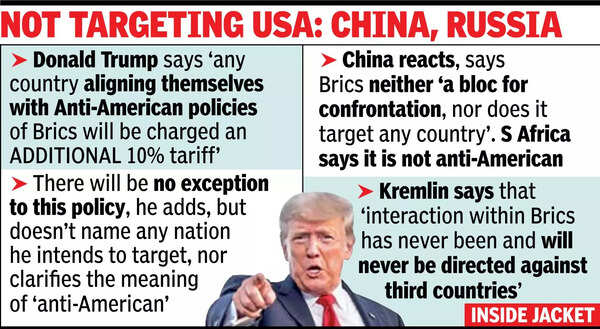
US President Donald Trump on Monday decided to impose 25% reciprocal tariffs on Japan and South Korea – almost the same as those announced in April.He provided notice of the tariffs, beginning Aug 1, by posting letters on social media addressed to political heads of both the countries.

This followed Trump’s warning earlier in the day that any country aligning themselves with “anti-American policies” of Brics would be slapped with an extra 10% tariff.At the time of going to press, Trump also announced tariffs on five more countries with the new rate for three lower than the April 2 reciprocal rates. Myanmar dropped from 44% to 40%, Laos from 48% to 40% and Kazakhstan from 27% to 25%. South Africa stayed at 30% and Malaysia increased by 1 percentage point to 25% (similar to Japan).While Indian officials have not given up on the expectation of a “mini-trade deal”, despite their stated reluctance on lowering duties on agricultural goods such as soybean, maize and dairy products, Monday’s tariff announcements could be a pointer to Trump imposing 26% duty on all Indian exports to US in case he is not convinced about the arrangement worked out at the official level last week.But given commerce and industry minister Piyush Goyal’s statement on the Centre’s intent to keep national interest and farmer’s interests paramount, there is little elbow space for negotiations on this front. That leaves products such as apples and pecan nuts on which India can lower tariffs for American imports, in addition to automobiles and whiskey. US has indicated that it is unwilling to lower duties below the 10% baseline levy and also wants to retain sectoral tariffs of 50% on iron and steel products and 25% on auto parts. Exporters and businesses have worked out an arrangement where 6-7% of the baseline tariff is split between them and the rest is passed on to consumers.














